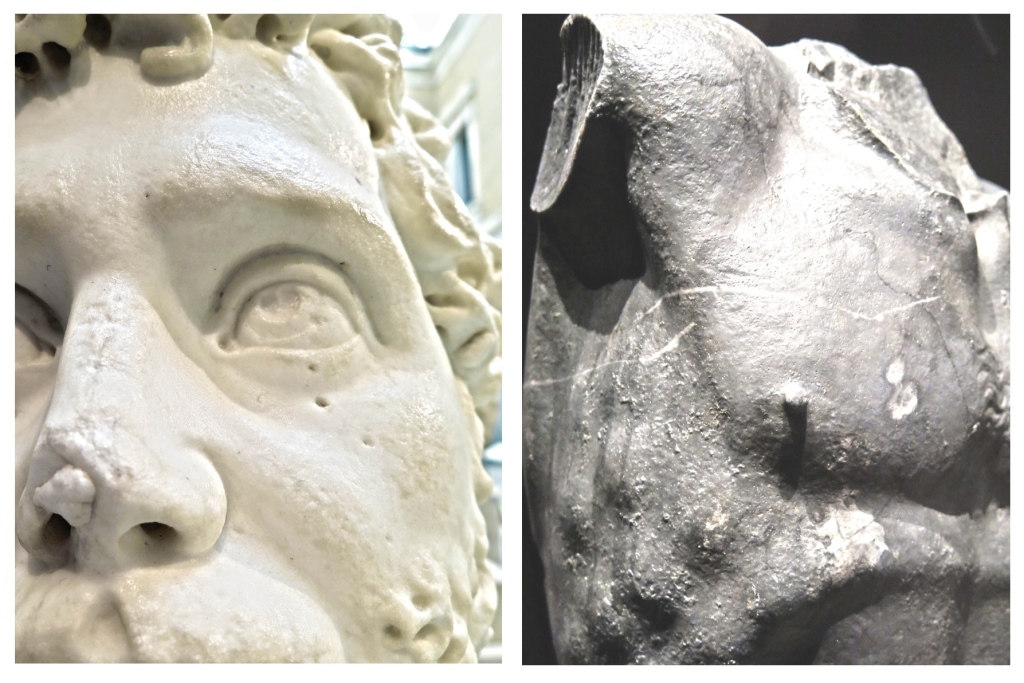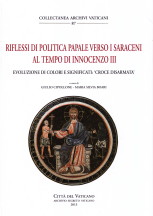Prof. Dario Del Bufalo
Specialist in stone sculpture , colored marbles , glyptics , restoration and Geoarchaeology
‘BUFALE ARCHEOLOGICHE’ in Il Giornale dell’Arte, December 2014 “Il Valzer degli spatinatori”
New column of Archaeological Commentary: ‘BUFALA ARCHEOLOGICA’ – Column in Il Giornale dell’Arte – December 2014
The waltz of the patina removers
 What is the antique patina in works of art? It is not dirt. It is not a paint applied to the surface. It is not dust or earth. For marble and stone objects, patina is all that remains on them after a good wash with soap and water. Patina is composed of all those materials that are accidentally deposited on the surface of a stone over the years or centuries, whether the work has remained above the surface or under the ground. On marble, the patinas are like a «biological clock». Certain patinas on marble are like carbon-14 for organic materials or like thermoluminescence for terracotta: that is the scientific proof of the age of a stone sculpture. Patinas historicize the work, they have their own charm and aesthetic sense. Ultimately a patina is time, therefore history.
What is the antique patina in works of art? It is not dirt. It is not a paint applied to the surface. It is not dust or earth. For marble and stone objects, patina is all that remains on them after a good wash with soap and water. Patina is composed of all those materials that are accidentally deposited on the surface of a stone over the years or centuries, whether the work has remained above the surface or under the ground. On marble, the patinas are like a «biological clock». Certain patinas on marble are like carbon-14 for organic materials or like thermoluminescence for terracotta: that is the scientific proof of the age of a stone sculpture. Patinas historicize the work, they have their own charm and aesthetic sense. Ultimately a patina is time, therefore history.
So why are there still restorers, superintendents or museum directors that scrape it off mechanically or chemically? In about 1988, I remember a curious controversy: Federico Zeri suddenly declared that the Ludovisi Throne was a fake. According to him it had become a «fake» following a sandblasting that had completely removed the excavation patina. Appalled by this intervention, Pico Cellini (who told me the story) and Professor Guido Devoto, along with Zeri, challenged this «falsifying removal of the patina». Margherita Guarducci, in opposition to Zeri, immediately replied that «the Throne is entirely authentic … as the analysis of ancient limestone concretions on the surface of the marble demonstrated». Too bad that these concretions are no longer there… It happened another time, when in 2000 the Capitoline Wolf was «sand-papered», together with other bronzes in the Palazzo dei Conservatori. Still before, it had also happened to various marbles: the bust of Emperor Commodus (which now seems neoclassical, snow-white and polished) and many portraits of the Hall of the Caesars conserved in the same museum. All very white and completely without patina.
Last month I was in Madrid to visit the new layout of the artworks at the MAN, the National Archaeological Museum, which had recently reopened. The open space where the marble Roman sculptures are conserved, exhibits a series of portraits of emperors completely without patina, whitened and over half of these «cleaned», using muriatic acid baths. Even the portrait of Septimius Severus (photo 1) was «skinned», so much so that the surface, as well as being very white, has corroded and got that «shine» to it, a brightness typical of an acid reaction. An ancient grey marble torso of Triton (photo 2) was literally eaten away by the acid. What a horror!
Some «restorers» at the Istituto Superiore (is there an inferior one too?) del Restauro tell me, citing Brandi, that patina must be removed «in order to enjoy the work as it was originally»! If you really wanted to enjoy a sculpture «as it was originally», today there are fantastic digital techniques that are non-invasive such as the 3D scanner and the large 3D printers, which faithfully reproduce the sculpture and can manipulate the virtual model without «touching» the original.
Enough of this over-cleaning of ancient patinas!
No more citing Brandi without thinking! Indeed, let’s not cite him anymore!
No more sandblasting the fountains and monuments of our city every five years, to give work to the usual restoration companies!
No more violent and irreversible actions on our artistic patrimony that we must keep intact for our descendants to enjoy!
For info or to report something: bufalearcheologiche@gmail.com
Read all the ARCHEO SPOOF STORIES
 English
English Italiano
Italiano
